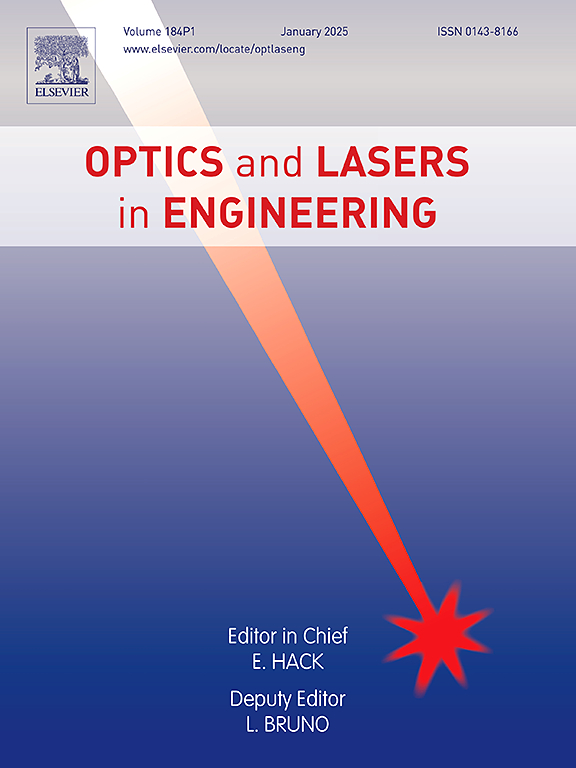The synchronous measurement of mechanical and magnetic characteristics of superconducting materials in extreme environments
IF 3.5
2区 工程技术
Q2 OPTICS
引用次数: 0
Abstract
Thermomagnetic instability typically occurs before the quench of high temperature superconductors. Magnetic perturbation and thermal agitation are known to be the main driving force of thermomagnetic instability. However, the interaction between mechanical deformation and the thermomagnetic instability is still unclear. To investigate the phenomenon and inner principle of the thermomagnetic instability induced by mechanical deformation, an experimental method is proposed for the in-situ, real-time, and synchronous test of mechanical deformation and magnetic flux based on digital imaging correlation (DIC) and magneto-optical imaging (MOI). Under the current-carrying and external magnetic field conditions, uniaxial tensile tests of YBa2Cu3O7-δ (YBCO) coated conductors (CCs) are carried out, in which the evolution and distribution magnetic flux induced by strain are studied. At the same time, chemical etching is adopted to explore the damage caused by mechanical deformation in YBCO layer. It is found through the experiment that the mechanical deformation can induce thermomagnetic instability, and threshold of strain for inducing flux motions is obtained. Meanwhile, magnetic flux avalanche occurs in front end of the flux penetration area in the case of current carrying. In addition, plenty of various-sizes transverse cracks are discovered in the superconducting layer whose distribution area basically coincides with the flux penetration area. The experiment results reveal the intrinsic correlation between the mechanical deformation and thermomagnetic instability of high temperature superconducting wires, which provides a direct experimental approach for the study of unpredicted quench behaviors of superconducting magnets.
在极端环境下同步测量超导材料的机械和磁特性
热磁不稳定性通常发生在高温超导体淬火之前。众所周知,磁扰动和热搅拌是热磁不稳定性的主要驱动力。然而,机械变形与热磁不稳定性之间的相互作用仍不清楚。为了研究机械变形诱发热磁不稳定性的现象和内在原理,提出了一种基于数字成像相关(DIC)和磁光成像(MOI)的机械变形与磁通原位、实时、同步测试的实验方法。在载流和外磁场条件下,对 YBa2Cu3O7-δ (YBCO) 涂层导体(CCs)进行单轴拉伸试验,研究应变引起的磁通演化和分布。同时,还采用化学蚀刻的方法来探究 YBCO 层机械变形造成的损伤。实验发现,机械变形可诱发热磁不稳定性,并得到了诱发磁通运动的应变阈值。同时,在电流携带的情况下,磁通穿透区域的前端会出现磁通雪崩。此外,在超导层中还发现了大量不同大小的横向裂纹,其分布区域与磁通穿透区域基本重合。实验结果揭示了高温超导线材的机械变形与热磁不稳定性之间的内在联系,为研究超导磁体的未预见到的淬火行为提供了直接的实验方法。
本文章由计算机程序翻译,如有差异,请以英文原文为准。
求助全文
约1分钟内获得全文
求助全文
来源期刊

Optics and Lasers in Engineering
工程技术-光学
CiteScore
8.90
自引率
8.70%
发文量
384
审稿时长
42 days
期刊介绍:
Optics and Lasers in Engineering aims at providing an international forum for the interchange of information on the development of optical techniques and laser technology in engineering. Emphasis is placed on contributions targeted at the practical use of methods and devices, the development and enhancement of solutions and new theoretical concepts for experimental methods.
Optics and Lasers in Engineering reflects the main areas in which optical methods are being used and developed for an engineering environment. Manuscripts should offer clear evidence of novelty and significance. Papers focusing on parameter optimization or computational issues are not suitable. Similarly, papers focussed on an application rather than the optical method fall outside the journal''s scope. The scope of the journal is defined to include the following:
-Optical Metrology-
Optical Methods for 3D visualization and virtual engineering-
Optical Techniques for Microsystems-
Imaging, Microscopy and Adaptive Optics-
Computational Imaging-
Laser methods in manufacturing-
Integrated optical and photonic sensors-
Optics and Photonics in Life Science-
Hyperspectral and spectroscopic methods-
Infrared and Terahertz techniques
 求助内容:
求助内容: 应助结果提醒方式:
应助结果提醒方式:


